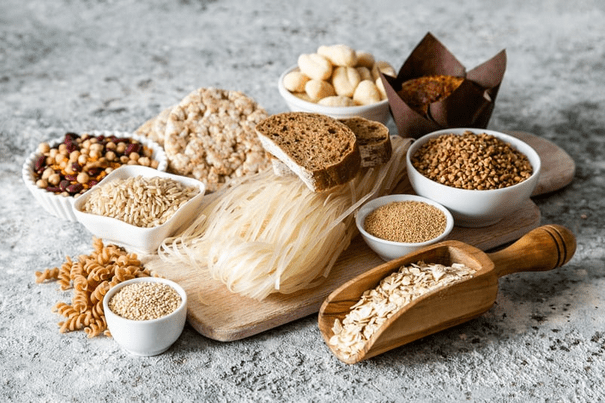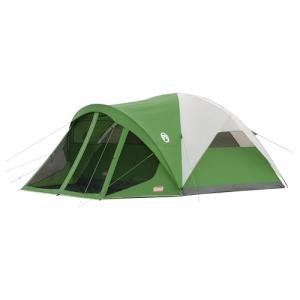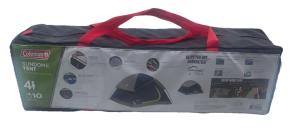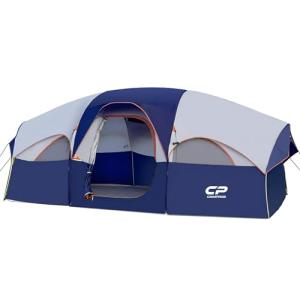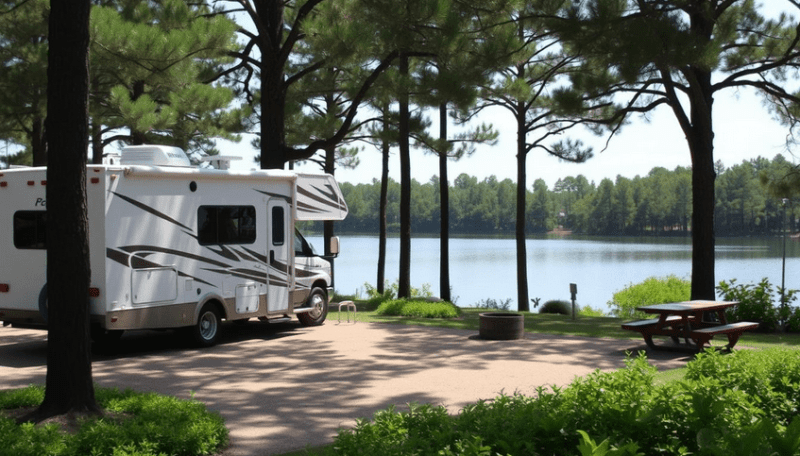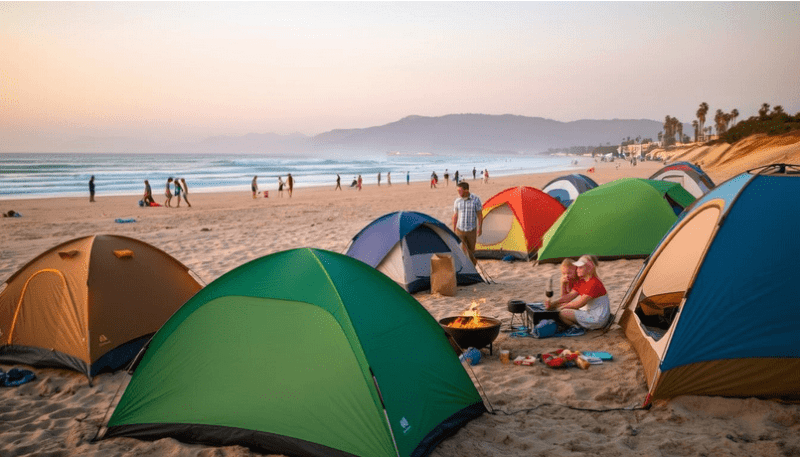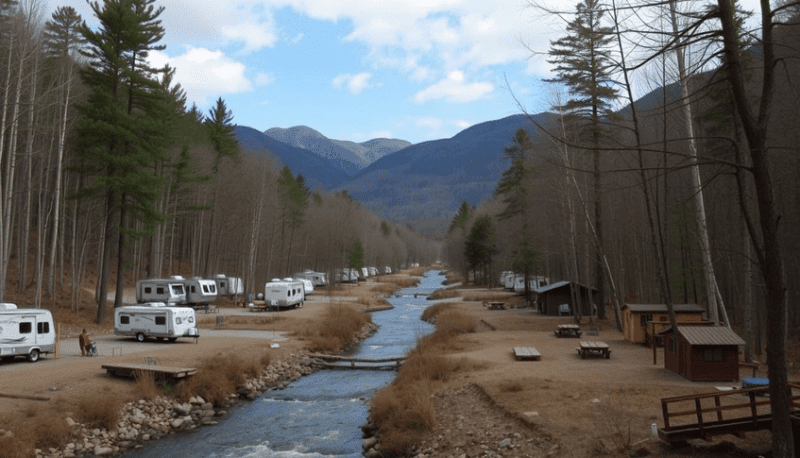Camping can be a fun way to enjoy nature, but for those with celiac disease or gluten sensitivity, finding safe food options is crucial. With the right planning and tasty recipes, gluten-free camping can be enjoyable and worry-free. Whether someone is new to a gluten-free diet or an experienced camper, there are plenty of delicious meals that can be made over the open fire or on a portable stove.
Meal preparation is key to a successful camping trip. Packing gluten-free staples and knowing how to adapt favorite recipes makes it easier to eat well outdoors. By focusing on fresh ingredients and easy-to-make dishes, campers can satisfy their hunger while sticking to a gluten-free lifestyle.
Key Takeaways
- Gluten-free camping requires careful meal planning and preparation.
- There are many delicious recipes that suit a gluten-free diet.
- Safety and storage tips help keep gluten-free foods safe while camping.
Understanding Gluten-Free Camping
Gluten-free camping involves planning meals and snacks that do not contain gluten. This can be particularly important for those with specific health concerns. Understanding the basics of gluten-free diets can help campers enjoy their trips while staying safe and satisfied.
What Does Gluten-Free Really Mean?
Gluten is a type of protein found in wheat, barley, and rye. A gluten-free diet means avoiding foods that contain these grains. Many processed foods also have gluten, so reading labels is important.
Common gluten-free grains include:
- Rice
- Quinoa
- Corn
- Potatoes
Eating gluten-free doesn't mean sacrificing taste. There are many delicious options available. Foods are also enriched with nutrients that may be lost when avoiding gluten-containing grains.
Celiac Disease and Gluten Sensitivity
Celiac disease is an autoimmune disorder. For people with this condition, consuming gluten can damage the intestines. Symptoms may include stomach pain, bloating, and fatigue.
Gluten sensitivity is different from celiac disease. People with gluten sensitivity may experience discomfort without the intestinal damage seen in celiac disease.
Both conditions require a strict gluten-free diet. It is essential for individuals to understand their health needs when choosing foods while camping.
Benefits of a Gluten-Free Camping Trip
Camping gluten-free offers several benefits. It helps maintain health for those with celiac disease or gluten sensitivity.
Eating gluten-free can also encourage creativity in meal planning. Campers can explore new recipes and ingredients, leading to exciting meals.
Benefits include:
- Reduced Risk of Illness: Avoiding gluten prevents symptoms for sensitive individuals.
- Improved Digestion: Many gluten-free foods are rich in fiber and nutrients.
- Community: Sharing gluten-free meals can connect campers and create a supportive environment.
With proper planning, gluten-free camping can be enjoyable and stress-free.
Gluten-Free Meal Planning and Prep
Planning and preparing gluten-free meals for camping can make the experience enjoyable and stress-free. A mix of make-ahead meals, easy gluten-free ideas, and snacks will ensure that everyone stays satisfied and energized.
Make-Ahead Meals for Convenience
Make-ahead meals save time and reduce stress while camping. Preparing dishes at home allows for easy packing. Hearty options, such as gluten-free chili or vegetable stir-fry, can be prepped in advance and stored in airtight containers.
Consider easy recipes like:
- Quinoa Salad: Packed with veggies and dressed with olive oil and lemon.
- Gluten-Free Pasta Bake: Use gluten-free pasta, marinara sauce, and cheese.
These meals are easy to heat up over a campfire or portable stove. Use a cooler to keep meals fresh, making dinner simple after a day of outdoor fun.
Easy Gluten-Free Meal Ideas
Easy gluten-free meal ideas simplify cooking at the campsite. Quick options can make meal times enjoyable without complex preparation.
Some easy meals include:
- Tacos: Use gluten-free tortillas, beans, grilled meats, and fresh toppings.
- Stir-Fried Rice: Cooked rice with vegetables and a choice of protein are simple and flavorful.
These meals take little time to prepare and have minimal cleanup. Cooking with one or two pots keeps everything manageable and efficient, making camping meals stress-free.
Gluten-Free Snacks and Quick Bites
Snacks are essential for fueling a day filled with activities. Gluten-free snacks keep energy levels up while satisfying cravings.
Some great options include:
- Gluten-Free Granola: Crunchy, flavored granola is perfect for breakfast or snacking.
- Trail Mix: Combine nuts, seeds, and gluten-free dried fruit for a nutritious and energizing snack.
Pack snacks in resealable bags for easy access. This will help keep campers happy while on the trails or during downtime at the campsite.
Delectable Gluten-Free Recipes
Camping meals can be both delicious and gluten-free. There are plenty of options for breakfasts, lunches, dinners, and snacks that are easy to prepare. Here are some tasty recipes to try on the next camping trip.
Gluten-Free Breakfasts to Start the Day
For a hearty breakfast, gluten-free pancakes are a must. They can be made with gluten-free flour. To prepare, mix:
- 1 cup gluten-free all-purpose flour
- 1 tablespoon baking powder
- 1 cup milk (or dairy-free alternative)
- 1 egg
- 2 tablespoons sugar
Cook the pancakes on a stovetop or camping grill until golden brown. Serve with maple syrup or fresh fruit.
Another easy choice is scrambled eggs. They can be cooked in a pan or on a campfire. Add veggies like bell peppers or spinach for extra flavor.
Hearty Gluten-Free Lunches
Foil packet meals are perfect for lunch while camping. For a chicken and veggie packet, use:
- 1 chicken breast
- Mixed vegetables (like zucchini, bell peppers, and carrots)
- Olive oil, salt, and pepper
Wrap everything in foil and place on the fire for about 30 minutes. This meal is filling and requires minimal cleanup.
Another option is a gluten-free wrap. Use a gluten-free tortilla filled with grilled chicken, lettuce, cheese, and avocado. It’s easy to pack and can be eaten cold or warmed up over a fire.
Satisfying Gluten-Free Dinners
For dinner, consider grilled salmon with a side of quinoa. This meal is healthy and simple. Season the salmon with herbs and lemon, then grill. Quinoa can be cooked in a pot while camping.
Another great option is a gluten-free chili. Use canned beans, tomatoes, and any ground meat. Season with chili powder and cook in a pot over the fire. This meal warms everyone up after a long day outdoors.
Sweet and Savory Gluten-Free Snacks
Snacks are essential for camping. Trail mix is easy to make and includes nuts, dried fruit, and gluten-free chocolate. This mix provides energy and is easy to pack.
Popcorn is another great snack. It can be made over the campfire using a popcorn popper or in a pot. Season with salt or nutritional yeast for a cheesy flavor.
Finally, fruit skewers are a fun treat. Skewer grapes, pineapple, and strawberries for a refreshing snack. They are healthy and require no cooking.
Gluten-Free Camping Staples
When preparing for gluten-free camping, packing the right ingredients is key. Choosing the right foods ensures satisfying meals that align with dietary needs. Here are essential ingredients to consider and tips on deciding between homemade and store-bought items.
Essential Gluten-Free Ingredients to Pack
When camping, it is important to have a variety of gluten-free staples. Here are some essentials to include:
- Gluten-Free Oats: Great for breakfast, they can be prepared quickly and easily. They also provide energy for outdoor activities.
- Gluten-Free Crackers: These are perfect for snacking. They can be enjoyed with hummus or cheese for a tasty treat.
- Hummus: A versatile dip that goes well with veggies or crackers. It is also rich in protein and can be a great addition to meals.
- Gluten-Free Corn Tortillas: These are useful for tacos or wraps. They provide a gluten-free alternative to traditional bread.
- Gluten-Free BBQ Sauce: Ideal for grilling, this sauce adds flavor to meats and vegetables without gluten.
Homemade vs. Store-Bought: What to Consider?
Choosing between homemade and store-bought options can impact the camping experience. Homemade items can be fresher and more tailored to personal tastes.
Making gluten-free snacks from scratch can be a fun activity before the trip. Items like trail mix or energy bars are easy to prepare. They can offer an enjoyable and healthy option.
Store-bought items provide convenience. They save time and offer a reliable gluten-free label. Brands now offer a wide range of gluten-free foods, making it easier to find safe options.
Consider the balance between time, convenience, and preference when packing for the trip.
Campsite Cooking Techniques and Tips
Cooking at a campsite can be simple and enjoyable. Understanding how to use campfires and portable stoves, along with preventing cross-contamination, will help make the experience smooth and safe.
Using a Campfire or Portable Stove Efficiently
When cooking over a campfire, safety and efficiency are key. A fire needs a solid base with dry wood to maintain heat. Campers often use cast iron skillets, which distribute heat evenly, making them great for frying and baking.
Another popular method is to prepare foil packet meals. These meals are simple; just wrap vegetables, protein, and seasonings in aluminum foil. Place them near the coals for 20-30 minutes.
For versatility, portable stoves can be a game changer. They allow for easy temperature control and can boil water quickly. Campers should use non-toxic fuel and avoid spills for safety.
How to Prevent Cross-Contamination
Preventing cross-contamination is crucial for gluten-free cooking. Separate utensils for gluten-free foods are essential to avoid mixing with gluten-rich items. Using color-coded cutting boards can help campers remember which board is for gluten-free items.
Store gluten-free ingredients in clearly labeled containers. When setting up, place gluten-free food on a higher shelf to keep it away from any gluten sources.
Washing hands and surfaces before cooking reduces the risk of contamination. It is also important to use different pots and pans for gluten-free meals. Keeping everything organized and separate enhances safety and enjoyment while camping.
Adapting Non-Gluten-Free Recipes
Adapting recipes for gluten-free camping involves simple substitutions and creative modifications. With a few key changes, favorite camping meals can be made safe and delicious for everyone in the group.
Substitutions for Common Camping Meals
Many camping meals can easily be adapted. For example, in a hobo dinner foil pack, swap traditional pasta or bread with gluten-free options. Use gluten-free noodles or wraps as a base.
When making camp dinners, replace soy sauce with tamari, which is gluten-free. Rice and potatoes are naturally gluten-free and are great sides to any meal.
For snacks, choose corn chips instead of usual crackers. Additionally, check labels on packaged foods to confirm they are gluten-free. Stick with whole foods like fruits, vegetables, and meats, which are safe and filling options.
Recipe Modifications for Dietary Needs
Adapting recipes may also include adjusting cooking methods. For instance, a campfire chili can be made gluten-free by ensuring all canned ingredients, like beans and tomatoes, don’t contain gluten.
For breakfast, oatmeal can be switched for quinoa or gluten-free grains. Pancakes made with almond flour or gluten-free baking mixes work well too.
When planning meals, include a variety of options that cater to different dietary needs. A dedicated cooking space and clean utensils help prevent cross-contamination. Always read ingredients, especially in condiments like ketchup or salad dressings.
The Adventurer's Guide to Eating Well Outdoors
Eating well outdoors can enhance any camping experience. For those following a gluten-free diet, careful planning is essential to enjoy delicious meals while staying healthy.
Navigating Gluten-Free Meals While Hiking and Backpacking
For outdoor enthusiasts, gluten-free backpacking meals require some preparation. Start by selecting packaged foods that specify gluten-free on the label. Instant rice, quinoa, and lentils are excellent base options.
Snacks are important too. Consider items like mixed nuts, seeds, and gluten-free protein bars. Fresh fruits and vegetables can be packed carefully and consumed along the trail.
Here’s a quick list of gluten-free meal ideas:
- Breakfast: Gluten-free oatmeal with dried fruit
- Lunch: Rice cakes with nut butter
- Dinner: Quinoa salad with veggies and grilled chicken
Bringing lightweight cooking gear makes meal prep easier at the campsite.
Maintaining a Balanced Diet in the Wilderness
Eating a balanced diet outdoors can be a challenge, but it’s doable. Focus on incorporating proteins, healthy fats, and carbohydrates. This helps maintain energy levels during hiking and other activities.
Proteins can come from beef jerky, canned tuna, or chickpea salad. Healthy fats can be found in nut butters or avocado spread.
Use a meal plan to ensure a good mix of nutrients. For example:
- Proteins: Canned beans, nuts
- Carbs: Rice, gluten-free pasta
- Fruits/Veggies: Dried fruits, canned veggies
Staying hydrated is also crucial. Pack plenty of water or a water filtration system for safe drinking.
Safety and Storage for Gluten-Free Camping Foods
Proper safety and storage of gluten-free camping foods is essential to prevent contamination and protect meals from wildlife. Following best practices ensures that the food remains safe and tasty throughout the trip.
Best Practices for Food Safety
When preparing gluten-free meals for camping, cleanliness is key. Wash hands thoroughly before handling any food. Use separate utensils and cutting boards for gluten-free ingredients. This minimizes cross-contamination.
Pack foods in airtight containers or resealable bags. Label each bag to avoid mix-ups.
Cooking tips:
- Use a food thermometer to ensure cooked items reach safe temperatures.
- Keep cold foods at 40°F or below and hot foods above 140°F.
Gluten-free foods like quinoa, rice, lentils, and pre-packaged snacks are safe and nutritious options.
Storing Food to Prevent Wildlife Encounters
Storing food properly helps keep both meals and campers safe. Store all food and trash in bear-proof containers when camping in bear country.
Effective storage tips:
- Hang food bags at least 10 feet off the ground and 4 feet away from tree trunks.
- Choose a shaded area for storing food, as cooler temperatures slow spoilage.
Pack gluten-free snacks, like trail mix and energy bars, in individual portions. This makes them easy to grab and reduces the chance of leaving food scraps behind.
These steps help prevent wildlife encounters and ensure gluten-free meals stay safe and delicious.
Frequently Asked Questions
Many people want to know how to enjoy gluten-free meals while camping. This section addresses meal ideas, safe food preparation, and snack options. Here are some common questions and helpful answers.
What are some easy-to-prepare gluten-free camping meals for large groups?
Some easy gluten-free meals for large groups include grilled chicken with vegetables, chili made with beans, and quinoa salad. Tacos can be made with corn tortillas and filled with meats and veggies. These meals are simple to cook and can be prepared in larger portions.
How can I ensure that gluten-free desserts are safe to prepare and enjoy while camping?
To keep gluten-free desserts safe, always use gluten-free ingredients. Check labels on pre-packaged items like baking mixes. Consider desserts like fruit kebabs or gluten-free brownies made from almond flour. Keep preparation surfaces clean to avoid cross-contamination.
Can you suggest no-refrigeration-required, gluten-free meal options for outdoor adventures?
Canned beans, rice, and gluten-free pasta are great no-refrigeration options. Dried fruits, nuts, and nut butter pack well for additional nutrients. Instant oatmeal and gluten-free granola can also serve as quick, easy breakfasts.
Which gluten-free snacks are both convenient and nutritious for camping trips?
Snacks like popcorn, mixed nuts, and trail mix are both gluten-free and nutritious. Rice cakes and hummus are good options too. Fresh fruits and vegetables can make healthy snacks that do not require cooking.
What are the best practices for cooking gluten-free food in a campsite environment?
Always use separate cooking equipment like pots and utensils for gluten-free foods. Clean all surfaces thoroughly before cooking. Avoid foods with gluten nearby to prevent cross-contamination during cooking.
How can I accommodate both gluten and dairy-free dietary needs when planning camping meals?
Choose meals like grilled meats and roasted vegetables that can be made without gluten or dairy. Use dairy alternatives like almond milk or coconut yogurt. Provide separate toppings and sauces to meet different dietary needs.
DISCLAIMER
This document is provided for general information purposes only and should not be relied upon as providing legal advice, technical, or specific operational guidance to the reader, whether as to the practices described in the document or the applicable legal requirements and regulations. bestcampingdeals.com expressly disclaims any responsibility for liability arising from or related to the use or misuse of any information in this document.
.
